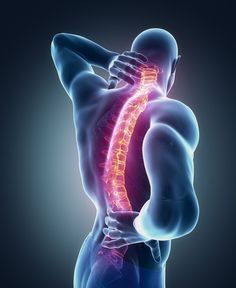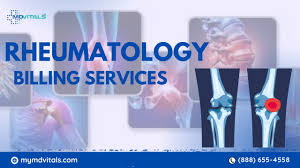Muscle strain in the back can lead to significant discomfort and disrupt daily activities; this guide outlines the steps to alleviate back pain from muscle strain, providing actionable techniques to ease the pain and support a smooth recovery. By employing effective strategies, you can find relief and promote healing.
1. Recognize the Symptoms
Identifying the signs of muscle strain is critical for timely action. Watch for:
- Sudden or gradual onset of back pain.
- Tenderness or swelling in the affected area.
- Limited range of motion.
- Muscle stiffness or spasms.
Seek medical advice if symptoms persist or worsen.
2. Prioritize Rest Without Inactivity
Rest your back to avoid aggravating the injury, but stay moderately active to maintain circulation. Gentle movements, such as short walks, help prevent stiffness and promote healing.
3. Apply Ice Packs Initially
Use ice packs within the first 48 hours to reduce swelling and numb pain. Apply an ice pack wrapped in a cloth to the injured area for 15-20 minutes every few hours.
4. Transition to Heat Therapy
After 48 hours, apply heat to encourage muscle relaxation and increase blood flow. Use a heating pad or warm compress for 15-20 minutes, especially before performing stretches.
5. Incorporate Gentle Stretches
Stretching helps restore flexibility and alleviate tension. Try these gentle stretches:
- Knee-to-Chest Stretch: Lie on your back, bring one knee to your chest, and hold for 20 seconds.
- Cat-Cow Stretch: Alternate between arching and rounding your back on all fours.
- Child’s Pose: Extend your arms forward while sitting back on your heels to stretch the lower back.
Move carefully and avoid overstretching.
6. Explore Natural Remedies
Alleviate pain with natural approaches:
- Epsom Salt Baths: Relieve soreness by soaking in warm water with Epsom salts.
- Essential Oils: Massage diluted lavender or eucalyptus oil onto the strained area.
- Herbal Teas: Drink chamomile or ginger tea to reduce inflammation and relax muscles.
7. Engage in Low-Impact Exercises
Stay active with exercises that strengthen your back without strain:
- Walking: Improves circulation and keeps muscles loose.
- Swimming: Provides a full-body workout with minimal impact.
- Yoga: Practice poses like Bridge Pose and Downward Dog to support recovery.
8. Support Healing with a Balanced Diet
Proper nutrition accelerates recovery. Focus on:
- Protein: Helps repair muscle tissue (e.g., fish, eggs, and beans).
- Anti-Inflammatory Foods: Incorporate spinach, berries, and almonds.
- Hydration: Drink water to keep muscles hydrated and flexible.
9. Relieve Stress to Reduce Tension
Stress can worsen muscle strain. Try relaxation techniques like:
- Deep Breathing: Take slow, deep breaths to ease muscle tension.
- Mindfulness Meditation: Focus on calming thoughts.
- Progressive Muscle Relaxation: Tense and release muscles methodically.
10. Maintain Ergonomic Posture
Good posture prevents additional strain and supports healing:
- Sit upright with back support.
- Keep feet flat and shoulders relaxed.
- Use ergonomic furniture and avoid slouching.
11. Apply Over-the-Counter Topical Treatments
Topical solutions provide temporary relief from pain:
- Menthol Balms: Offer a cooling sensation to ease discomfort.
- Capsaicin Cream: Blocks pain signals and warms the area.
- Arnica Gel: Reduces swelling and soothes muscles.
12. Focus on Quality Sleep
Sleep aids recovery by allowing your body to repair itself. Improve your sleep quality by:
- Using supportive bedding.
- Sleeping on your back with a pillow under your knees.
- Avoiding positions that strain your back, like stomach sleeping.
13. Consider Helpful Supplements
Consult your doctor before using supplements such as:
- Magnesium: Prevents cramps and promotes muscle relaxation.
- Omega-3 Fatty Acids: Reduces inflammation.
- Vitamin D and Calcium: Strengthens bones and muscles.
14. Leverage Massage Therapy
Massages relax tense muscles and enhance recovery. Options include:
- Self-Massage: Use foam rollers or massage tools for targeted relief.
- Professional Massage: Seek a qualified therapist familiar with muscle injuries.
15. Prevent Future Strains
Avoid recurring injuries by adopting these practices:
- Warm Up Before Physical Activity: Prepare your muscles with light stretches.
- Strengthen Core Muscles: Perform planks and bridges to stabilize your spine.
- Use Proper Lifting Techniques: Lift with your legs, not your back.
- Maintain a Healthy Weight: Reduce excess strain on your back.
16. Track Your Recovery Progress
Monitor your improvement to stay motivated and adapt your routine as needed:
- Record pain levels and mobility changes.
- Adjust exercises based on your progress.
- Celebrate milestones, such as returning to normal activities.
Conclusion
Relieving back pain caused by muscle strain requires a combination of rest, natural remedies, gentle exercises, and lifestyle changes. By following these effective techniques, you can ease discomfort and support your recovery. If symptoms persist or worsen, consult a healthcare professional for further assistance.







